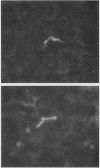Abstract
Complement component C5-deficient mice were found to be able to eliminate blood-borne Borrelia turicatae as effectively as normocomplementemic control animals. The absence of C5 and the resultant loss of hemolytic complement activity were confirmed for the deficient mouse strains used. Immunofluorescent staining of complement component C3 on blood-derived borreliae could be readily accomplished as early as 2 days before spirochetal elimination from all mice tested. These observations would suggest that C3 deposition was occurring, even though the terminal lytic steps were blocked in the complement-deficient mice. We propose that spirochetolysis is not requisite for successful removal of borreliae from the circulation of mice.
Full text
PDF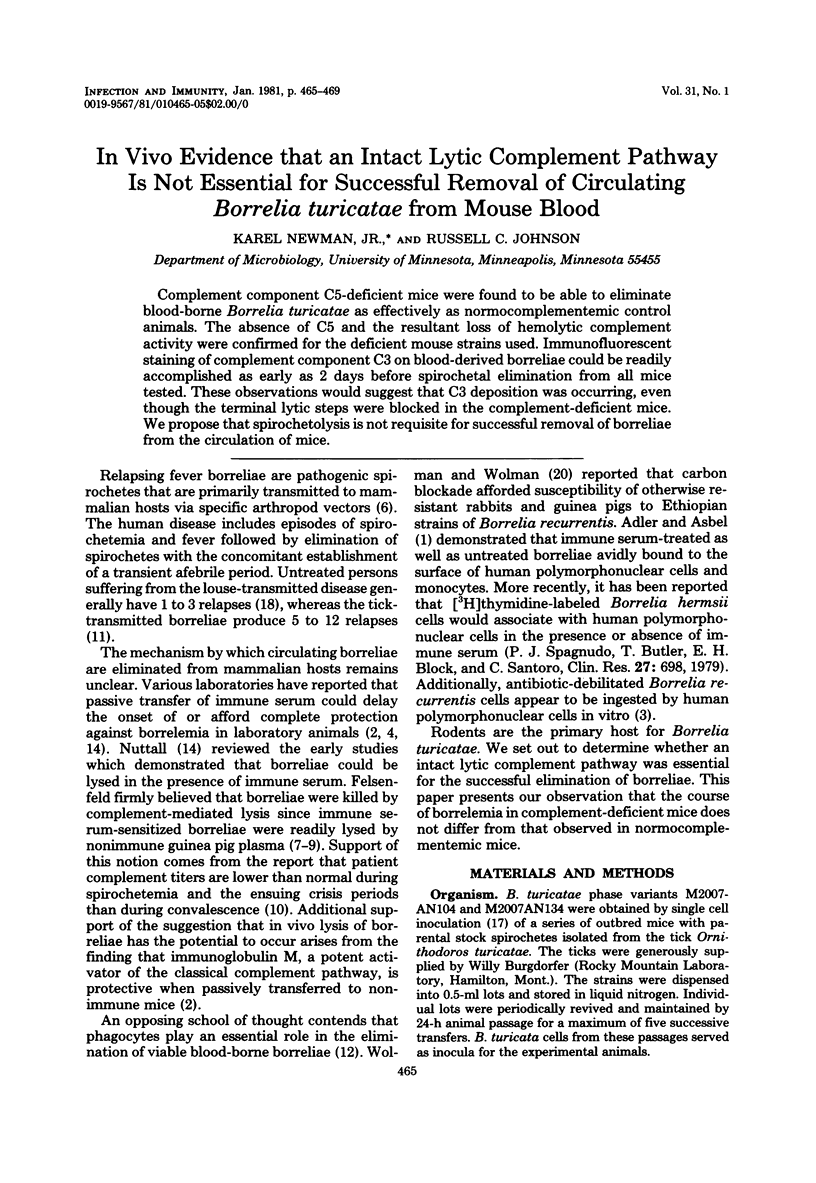
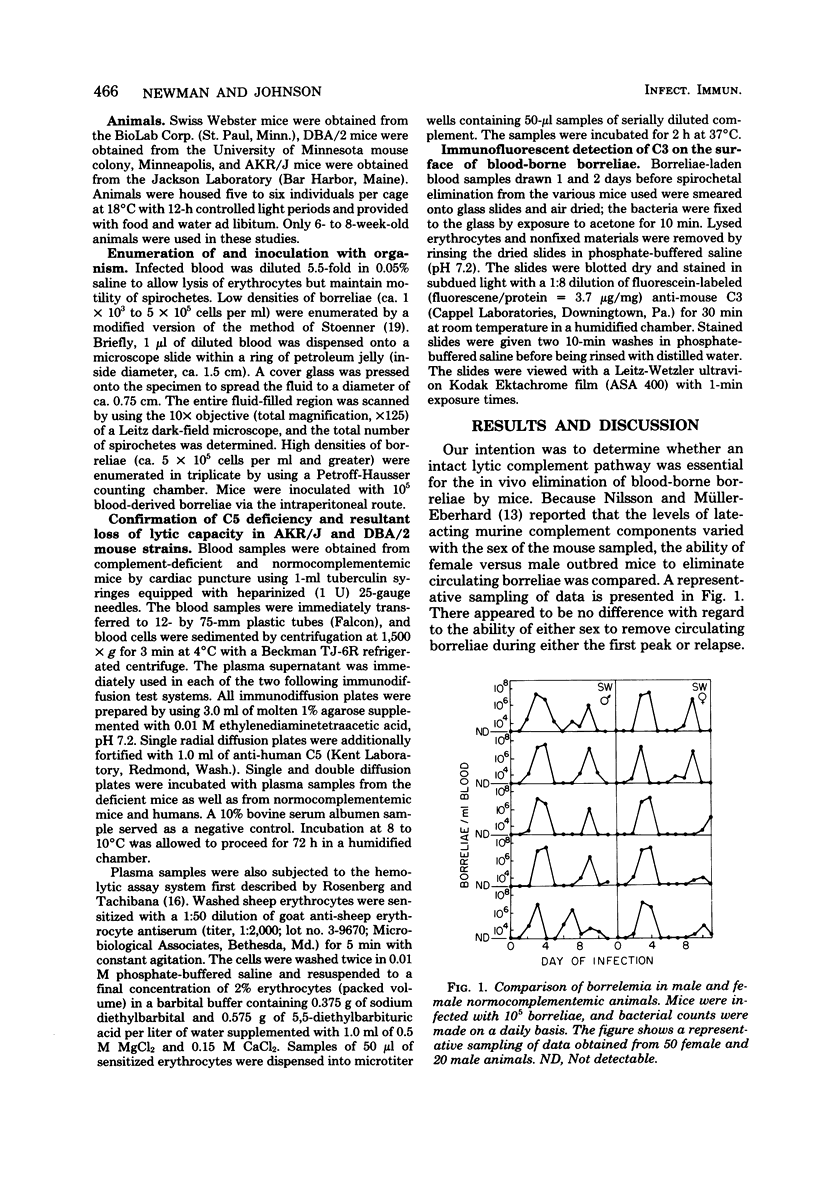
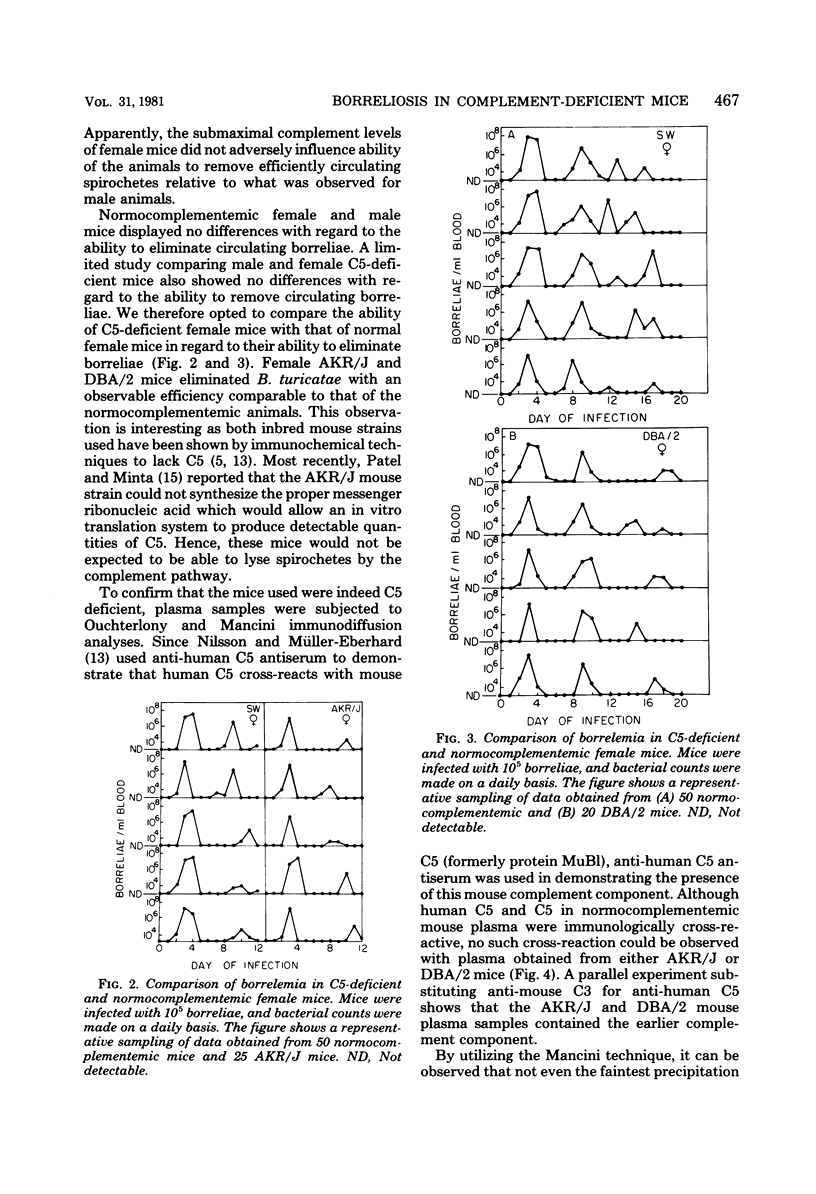

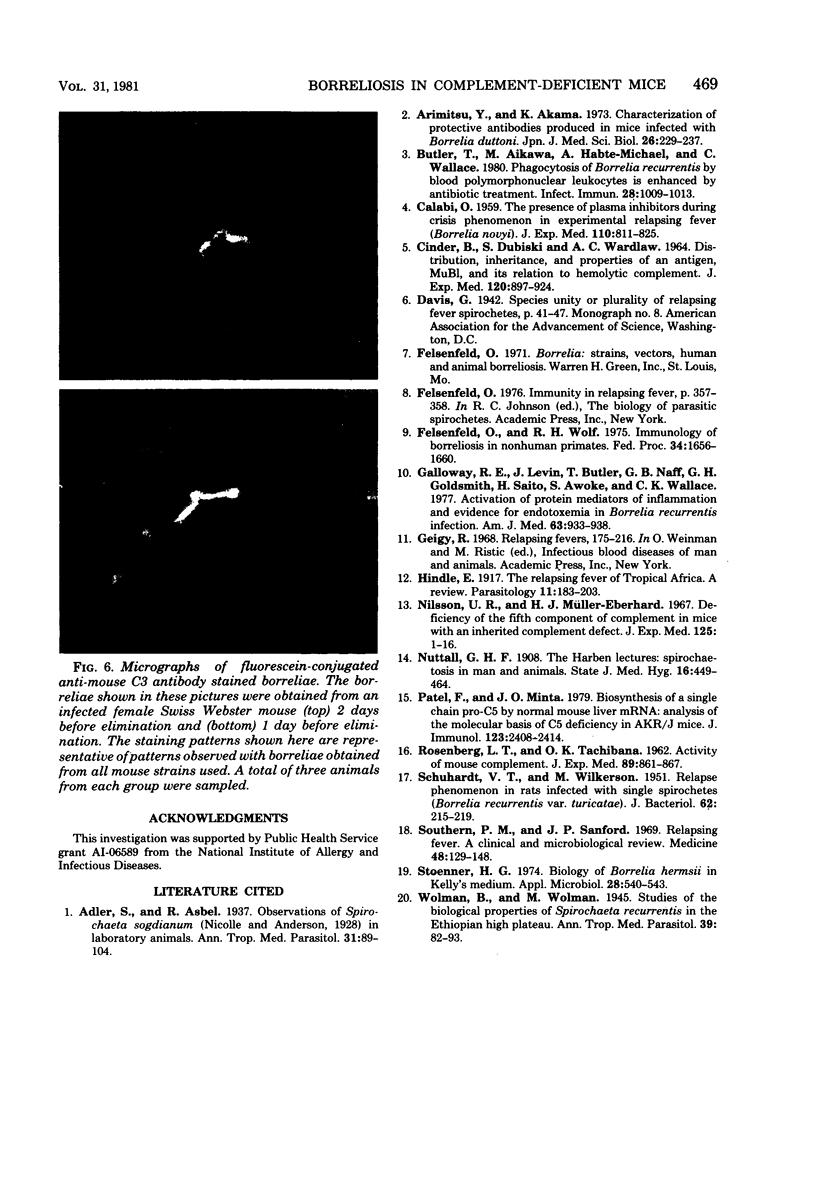
Images in this article
Selected References
These references are in PubMed. This may not be the complete list of references from this article.
- Arimitsu Y., Akama K. Characterization of protective antibodies produced in mice infected with Borrelia duttonii. Jpn J Med Sci Biol. 1973 Dec;26(5):229–237. doi: 10.7883/yoken1952.26.229. [DOI] [PubMed] [Google Scholar]
- Butler T., Aikawa M., Habte-Michael A., Wallace C. Phagocytosis of Borrelia recurrentis by blood polymorphonuclear leukocytes is enhanced by antibiotic treatment. Infect Immun. 1980 Jun;28(3):1009–1013. doi: 10.1128/iai.28.3.1009-1013.1980. [DOI] [PMC free article] [PubMed] [Google Scholar]
- CALABI O. The presence of plasma inhibitors during the crisis phenomenon in experimental relapsing fever (Borrelia novyi). J Exp Med. 1959 Nov 1;110:811–825. doi: 10.1084/jem.110.5.811. [DOI] [PMC free article] [PubMed] [Google Scholar]
- CINADER B., DUBISKI S., WARDLAW A. C. DISTRIBUTION, INHERITANCE, AND PROPERTIES OF AN ANTIGEN, MUB1, AND ITS RELATION TO HEMOLYTIC COMPLEMENT. J Exp Med. 1964 Nov 1;120:897–924. doi: 10.1084/jem.120.5.897. [DOI] [PMC free article] [PubMed] [Google Scholar]
- Felsenfeld O., Wolf R. H. Immunology of borreliosis in nonhuman primates. Fed Proc. 1975 Jul;34(8):1656–1660. [PubMed] [Google Scholar]
- Galloway R. E., Levin J., Butler T., Naff G. B., Goldsmith G. H., Saito H., Awoke S., Wallace C. K. Activation of protein mediators of inflammation and evidence for endotoxemia in Borrelia recurrentis infection. Am J Med. 1977 Dec;63(6):933–938. doi: 10.1016/0002-9343(77)90548-4. [DOI] [PubMed] [Google Scholar]
- Nilsson U. R., Müller-Eberhard H. J. Deficiency of the fifth component of complement in mice with an inherited complement defect. J Exp Med. 1967 Jan 1;125(1):1–16. doi: 10.1084/jem.125.1.1. [DOI] [PMC free article] [PubMed] [Google Scholar]
- Patel F., Minta J. O. Biosynthesis of a single chain pro-C5 by normal mouse liver mRNA: analysis of the molecular basis of C5 deficiency in AKR/J mice. J Immunol. 1979 Nov;123(5):2408–2414. [PubMed] [Google Scholar]
- ROSENBERG L. T., TACHIBANA D. K. Activity of mouse complement. J Immunol. 1962 Dec;89:861–867. [PubMed] [Google Scholar]
- SCHUHARDT V. T., WILKERSON M. Relapse phenomena in rats infected with single spirochetes (Borrelia recurrentis var. turicatae). J Bacteriol. 1951 Aug;62(2):215–219. doi: 10.1128/jb.62.2.215-219.1951. [DOI] [PMC free article] [PubMed] [Google Scholar]
- Stoenner H. G. Biology of Borrelia hermsii in Kelly medium. Appl Microbiol. 1974 Oct;28(4):540–543. doi: 10.1128/am.28.4.540-543.1974. [DOI] [PMC free article] [PubMed] [Google Scholar]





